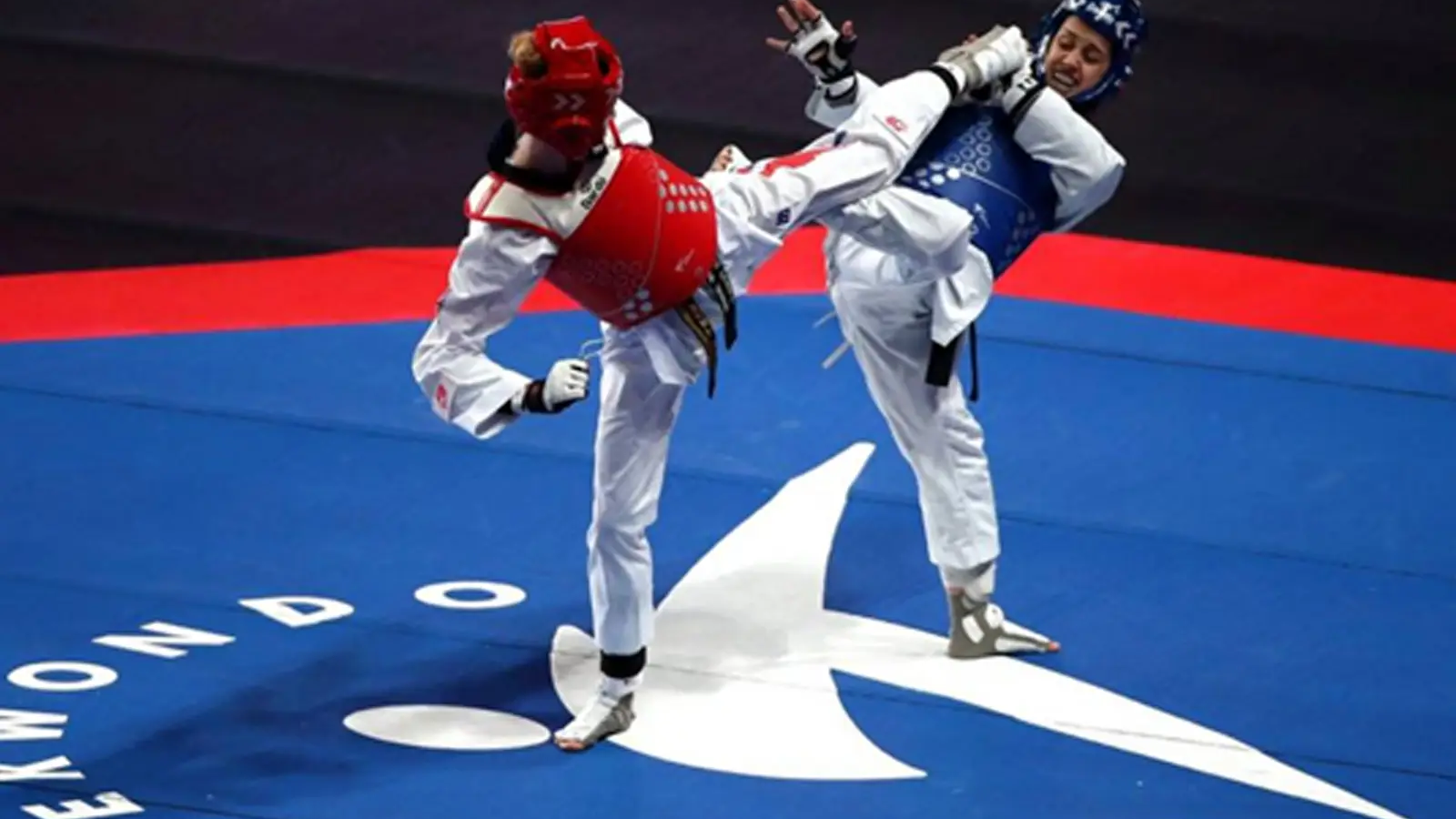Introduction
Taekwondo, a dynamic and disciplined martial art from Korea, combines elements of self-defence, sport, and physical fitness. Athletes in this field must engage in rigorous preparation to excel in competitions. This essay explores the multifaceted approach required for adequate Taekwondo competition preparation, focusing on physical training, mental conditioning, strategic planning, nutrition, and recovery. Each aspect is vital for optimising performance and achieving competitive success.
1. Physical Training
1.1. Technical Skills Development
Technical proficiency is crucial in Taekwondo. Athletes must refine their kicking techniques, patterns (Poomsae), and sparring skills. According to Kim and Lee (2020), mastering techniques like the roundhouse kick, side kick, and spinning kick requires consistent practice and correct form to enhance efficiency and power. Regular drills, shadowboxing, and partner exercises help in honing these skills.
1.2. Strength and Conditioning
A well-rounded strength and conditioning programme is essential for Taekwondo athletes. Strength training improves muscular endurance, explosive power, and overall physical resilience. Exercises such as squats, lunges, and plyometrics are recommended for developing leg strength, which is crucial for powerful kicks (Smith et al., 2018). Additionally, core strength is vital for balance and stability during high-intensity movements.
1.3. Cardiovascular Endurance
Cardiovascular conditioning enhances stamina and recovery. Interval training and long-distance running are commonly used to improve aerobic and anaerobic capacities (Jones & Carter, 2000). High-intensity interval training (HIIT) efficiently replicates the demands of competitive sparring, where bursts of activity are interspersed with short recovery periods.
2. Mental Conditioning
2.1. Psychological Resilience
Mental toughness is a critical factor in Taekwondo competition. Athletes must manage stress, maintain focus, and handle the pressure of competitive environments. Techniques such as visualisation, goal setting, and mindfulness meditation can improve psychological resilience and performance (Weinberg & Gould, 2014). Visualisation, in particular, allows athletes to mentally rehearse techniques and scenarios, boosting confidence and reducing anxiety.
2.2. Strategic Planning
Developing effective competition strategies involves analysing opponents, understanding the scoring system, and planning tactics. Analysing video footage of opponents can provide insights into their strengths and weaknesses (Kobayashi & Yamamoto, 2017). Athletes should also be familiar with the rules and regulations of their specific competition format to avoid penalties and capitalise on scoring opportunities.
3. Nutritional Considerations
3.1. Balanced Diet
Proper nutrition is fundamental for optimal performance and recovery. A balanced diet, rich in carbohydrates, proteins, and fats, provides the necessary energy and supports muscle repair (Kreider et al., 2010). Carbohydrates are essential for replenishing glycogen stores, while proteins aid muscle recovery and repair. Healthy fats support overall health and hormonal balance.
3.2. Hydration
Adequate hydration is essential for maintaining performance and preventing dehydration-related issues. Athletes should monitor fluid intake before, during, and after training sessions and competitions. Electrolyte balance is also crucial, especially during intense workouts and matches (Maughan & Shirreffs, 2012).
3.3. Supplements
While a well-balanced diet should provide most of the necessary nutrients, some athletes may benefit from supplements such as protein powders, creatine, and branched-chain amino acids (BCAAs). When used appropriately, these supplements can support muscle growth, enhance recovery, and improve performance (Nissen et al., 2000).
4. Recovery and Injury Prevention
4.1. Rest and Recovery
Rest and recovery are critical components of an effective training regimen. Adequate sleep, active recovery, and rest days allow the body to repair and adapt. According to Halson (2014), sleep is vital for cognitive function, mood regulation, and physical recovery. Athletes should aim for 7-9 hours of quality sleep per night.
4.2. Injury Prevention and Management
Preventing and managing injuries is essential for long-term success. Proper warm-up and cool-down routines, stretching, and strength training can reduce the risk of injuries (Hubbard et al., 2009). Prompt medical attention and a structured rehabilitation programme are crucial for effective recovery in case of injury.
4.3. Physiotherapy and Massage
Regular physiotherapy and sports massage can help maintain physical health and address any muscular imbalances or tightness. These treatments can enhance flexibility, reduce muscle soreness, and improve overall performance (Murray & O’Connor, 2012).
5. Competition-Specific Preparation
5.1. Pre-Competition Routine
In the weeks leading up to competition, athletes should taper their training to reduce fatigue and peak at the right time. This period involves decreasing training volume while maintaining intensity to ensure readiness (Bosquet et al., 2007). Mental preparation, including visualisation and strategic planning, is also intensified during this phase.
5.2. Competition Day Strategy
On the day of the competition, athletes must manage their pre-competition routine, including warm-ups, nutrition, and mental preparation. A well-structured warm-up routine helps to prepare the body for the demands of competition and reduces the risk of injury (Cheung et al., 2003). Athletes should stay calm, focus, and execute their strategies effectively.
5.3. Post-Competition Analysis
After the competition, athletes should conduct a thorough analysis of their performance. Reviewing video footage, discussing strategies with coaches, and reflecting on strengths and areas for improvement are crucial for continuous development (Gould et al., 2002). This analysis helps identify key learning points and set future training and competition goals.
Conclusion
Adequate preparation for Taekwondo competitions requires a holistic approach encompassing physical training, mental conditioning, nutrition, recovery, and competition-specific strategies. Athletes can optimise their performance and achieve their competitive goals by addressing these areas. Ongoing dedication to training and a strategic approach to preparation are essential for success in the highly demanding and competitive sport of Taekwondo.


Add a Comment